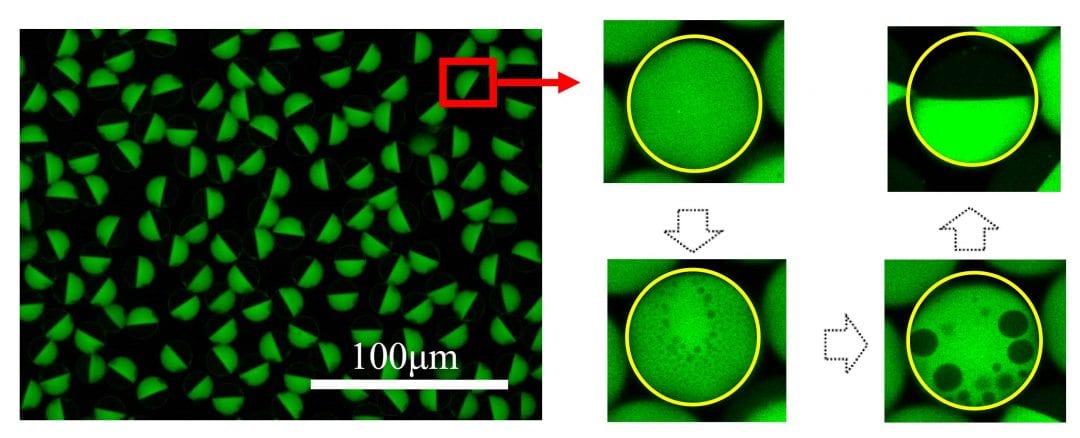Particles composed of two sides with distinct properties are commonly known as Janus particles. They are widely applied in various areas, such as drug delivery, enzyme immobilization, sensing, tissue replacement and repair, as well as water purification. They can be formed by the solidification of Janus droplets, which are droplets with two different compartments. Due to the importance of Janus particles, tremendous efforts have been made on generating Janus droplets.
In a recent article in Macromolecular Chemistry and Physics, Anderson Ho Cheung Shum and his group report on a new approach to generate Janus droplets. They employ phase separation of an aqueous two-phase system (ATPS). With the assistance of droplet microfluidic technology, the resulting droplets can be fabricated with clear interfaces and a highly controlled volume ratio of the two compartments.
The authors go on with encapsulating active ingredients, such as enzymes and cells. Due to the mild and aqueous nature of the droplet phase, the activity of the encapsulated cells and enzymes can be preserved at a relatively high level, facilitating their potential use in tissue engineering and the delivery of therapeutic enzymes.
Unlike other methods that involve steps that can denature the activity of the bioactive ingredients, Shum’s approach enables phase separation to be triggered under mild conditions. Due to their inherent affinity, the encapsulated bioactive ingredients can spontaneously partition into a particular compartment of the Janus droplets. The resultant Janus droplets can be converted into Janus particles through complete solidification or into non-spherical particles through partial solidification.
The clever method proposed by Shum and his team allows the encapsulation of delicate biomolecules in Janus droplets and the potential use of the corresponding particles in tissue engineering, cosmetics and biomedical engineering.

















